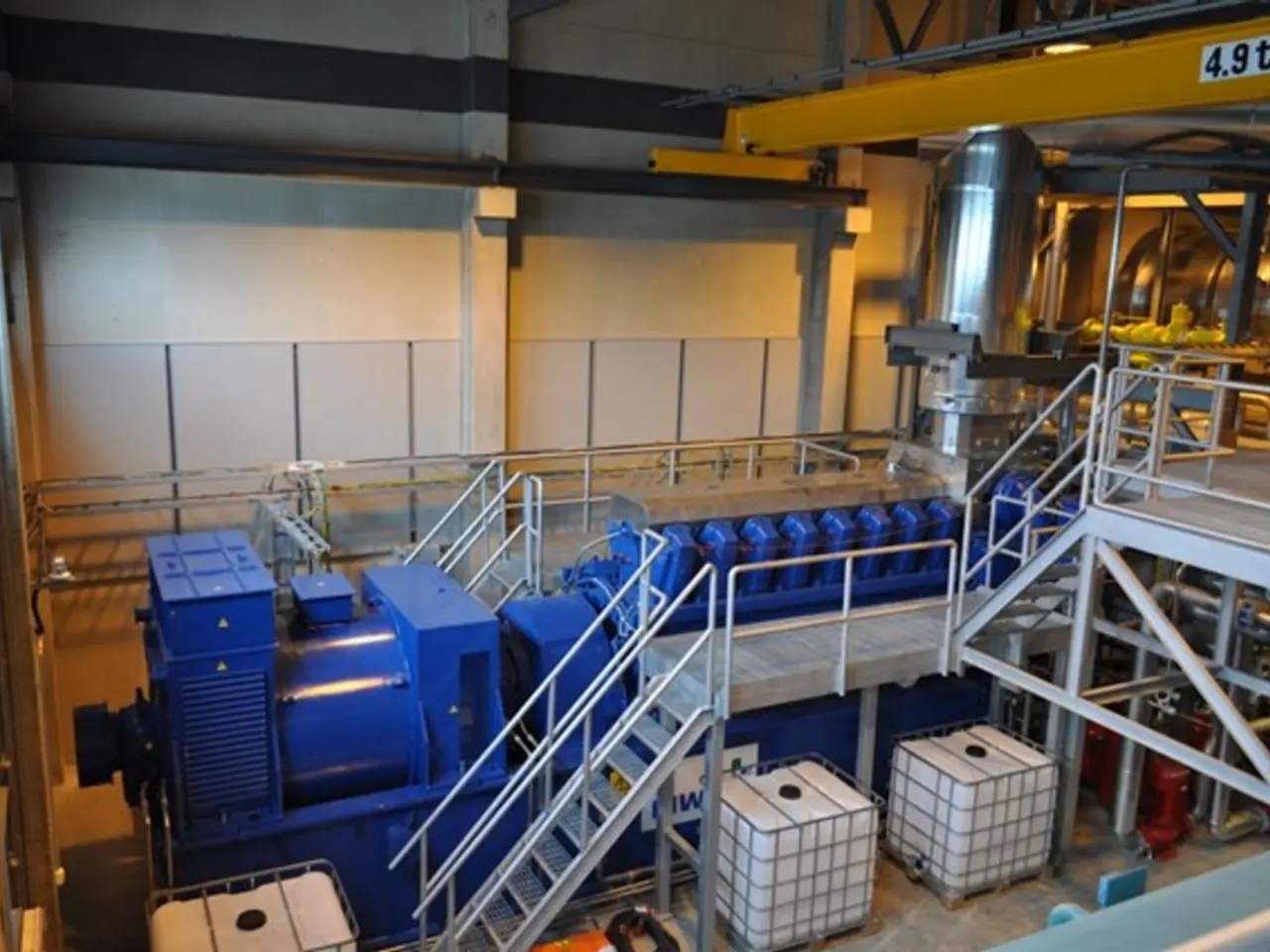United Kingdom Announces Changes to Electricity Market Pricing for Renewable Energy Sources
In the midst of the UK's transition towards a net zero carbon future, the national electricity pricing system is undergoing a significant reform. As of July 2025, the government has confirmed its decision to retain a single national wholesale electricity market, forgoing the adoption of zonal pricing due to concerns over complexity, costs, and investor disruption[1][2][3].
The heart of this reform lies in the Strategic Spatial Energy Plan (SSEP), a spatial optimization tool that will be central to the enhanced national pricing mechanism. The SSEP, set to be published in 2026, will map and identify the best locations, types, and quantities of electricity and hydrogen generation and storage across Great Britain[1][2][4]. This comprehensive plan will integrate various aspects such as planning reform, seabed leasing, network planning (like the Coordinated System Network Plan, CSNP), connections reform, and network charging, creating a more coordinated and anticipatory approach to network investment and development[1][2][4].
The first SSEP, covering both electricity and hydrogen infrastructure, will provide regional assessments and clearer guidance for industry players on where and how to invest, while preserving competition in the electricity market. This plan aims to reduce waiting times for grid connections, minimize network constraints, and support the government’s clean power mission by promoting investments aligned with optimal spatial deployment[2][4].
Complementary reforms include updating Transmission Network Use of System (TNUoS) and connection charging to provide better and more predictable locational investment signals that support the SSEP’s spatial optimization goals. Additionally, improvements to operational efficiency will be made by enhancing data visibility and system balancing via the National Energy System Operator (NESO)[1].
The UK’s electricity market reform maintains a national pricing model enhanced by the SSEP, which will spatially optimize energy infrastructure development to support the net zero transition. This approach seeks to balance efficiency, system security, affordability, and investor confidence in the evolving clean energy system[1][2][3][4].
Notable developments include the National Wealth Fund's £28.6 million equity investment in the Peak Cluster pipeline, a carbon dioxide transport pipeline that forms part of a carbon capture and storage (CCS) project network in the North West of England[5]. Moreover, EDF has confirmed its 12.5% stake into the Sizewell C nuclear project, following the UK government's recently published investment of £14.2 billion[6].
In the realm of renewable energy, UK company Urenco has signed a 15-year, multi-billion euro deal to produce enriched fuel for EDF nuclear power stations[7]. Meanwhile, Assystem, a French engineering company, has laid out plans to double its UK-based nuclear workforce across 10 sites, including Derby, Sunderland, Blackburn, Bristol, and London[8].
The reformed system also aims to be fairer, more affordable, and more secure. For instance, Ofgem has proposed the rejection of a "cap and floor" for TNUoS charges, seeking to ensure that transmission charges are fair, transparent, and accurately reflect the costs incurred by the transmission network[9]. Furthermore, DESNZ will work alongside NESO to launch a consultation on further reforms to reduce constraint payments, with the goal of making charges more predictable[10].
The consultation outlining Ofgem's stance on the CMP444 proposal is open until 11 August, and responses should be sent to [email protected][9]. DESNZ hopes that the REMA update will give clearer signals to investors about the relative system value of investing in different locations[11].
In summary, the UK’s electricity market reform, driven by the SSEP, is a significant step towards optimizing energy infrastructure development to support the net zero transition. This approach aims to balance efficiency, system security, affordability, and investor confidence in the evolving clean energy system[1][2][3][4].
References: [1] Department for Business, Energy & Industrial Strategy. (2022). National Strategic Spatial Energy Plan. Retrieved from https://www.gov.uk/government/publications/national-strategic-spatial-energy-plan
[2] Department for Business, Energy & Industrial Strategy. (2022). Energy White Paper. Retrieved from https://www.gov.uk/government/publications/energy-white-paper
[3] Department for Business, Energy & Industrial Strategy. (2022). Net Zero Strategy: Build Back Greener. Retrieved from https://www.gov.uk/government/publications/net-zero-strategy-build-back-greener
[4] Department for Business, Energy & Industrial Strategy. (2022). Electricity Market Reform: A Progress Update. Retrieved from https://www.gov.uk/government/publications/electricity-market-reform-a-progress-update
[5] National Wealth Fund. (2022). Investment in Peak Cluster pipeline. Retrieved from https://www.nationalwealthfund.co.uk/news/national-wealth-fund-announces-286-million-investment-in-peak-cluster-pipeline
[6] Department for Business, Energy & Industrial Strategy. (2022). Investment in Sizewell C. Retrieved from https://www.gov.uk/government/news/investment-in-sizewell-c
[7] Urenco. (2022). Urenco and EDF agree long-term enrichment services contract. Retrieved from https://www.urenco.com/news-and-media/news/2022/06/28/urenco-and-edf-agree-long-term-enrichment-services-contract
[8] Assystem. (2022). Assystem to double its UK nuclear workforce. Retrieved from https://www.assystem.com/news/assystem-to-double-its-uk-nuclear-workforce
[9] Ofgem. (2022). TNUoS reform consultation. Retrieved from https://www.ofgem.gov.uk/publications-and-updates/tnuos-reform-consultation
[10] Department for Business, Energy & Industrial Strategy. (2022). Constraints Collaboration Project. Retrieved from https://www.gov.uk/government/publications/constraints-collaboration-project
[11] Department for Business, Energy & Industrial Strategy. (2022). REMA update. Retrieved from https://www.gov.uk/government/publications/rema-update
- The Strategic Spatial Energy Plan (SSEP) will provide guidance for various industries, such as energy and finance, by mapping potential locations for electricity and hydrogen generation and storage across Great Britain.
- In the sports realm, the UK's electricity market reform, driven by the SSEP, seeks to promote investments that align with optimal spatial deployment, thereby supporting the government’s clean power mission and potentially attracting investment from international corporations like EDF and Assystem.




